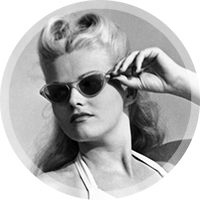

This past summer, I went to New Zealand for the first time. The week before, I had left my job. I was formulating plans about where I was going next and, in the meantime, I was ready for an adventure.
It’s only been a couple of years since I have been able to afford traveling to far-off places, thanks to conference speaking, so I’m still adjusting to doing so. Most of my adventures while traveling are internal: discoveries of perspective. Maybe that’s how it will always be. I’m comfortable traveling as an observer, finding ways to slip into the flow of a new place and absorb its small details and human stories. Usually, what I discover about my own place in the world is what I take away with me.
Wellington, New Zealand was in the middle of winter when I visited at the end of July. It was blustery and chilly, around fifty degrees - although, as a Chicagoan, I thought their claims of winter kind of cute. Despite the weather, I explored. I climbed to the top of the local big hill, Mount Victoria, where the sun fought the clouds and broke through to highlight the coastline between the North and South Islands. I prowled the artsy district and its secondhand bookstores. Thanks to the internet, I found the the right speciality coffee shops and asked friendly baristas for their recommendations. I walked the botanical gardens, quiet and evergreen, visited a hilltop planetarium and rode a cable car down to the shopping center. I went to the weekend outdoor market, watched fishermen clean and sell their catches from their boat in the bay and ate from food trucks.
And I went to museums. I love museums, big and small. Wellington hosts the New Zealand national museum as well as a Wellington city museum, both terrifically well-designed. They offered an unique experience to see much of a history I knew nothing about as well as history I thought I knew from a completely different perspective.
The native Māori and their culture were ever-present in the bits of New Zealand that I saw. I can’t say that I yet understand the extent or all the nuances of the history around their tales and how they intertwined with others’, but it was clear that they were at the heart of this land and there were strong efforts to reflect that in the modern city.
In one of the corners of the Wellington city museum was an interactive exhibition where they invited guests to write on a piece of paper their stories. Some of the provided slips of paper prompted helpfully: “In the New Year I hope to …” Some slips referenced the Matariki, the Māori name for the constellation Pleiades, the appearance of which in late May/early June signals the Māori new year. This Matariki, I am remembering …
As a stranger invited to contribute to a collective, evolving tale, I wrote my current story on a slip of paper. “I am finally learning to accept all of the difficulty and pain, because I now like who and where I am, and I wouldn’t have got here otherwise.” I taped it up on a wall with thousands of other slips of paper, fluttering from floor to ceiling and wall to wall, with their handwritten hopes and regrets and goals and memories and broken hearts and little glories, everything that makes human history.
And now, back on the other side of the world, I think often how about it’s still there, among all of the others, waiting patiently for the new year.